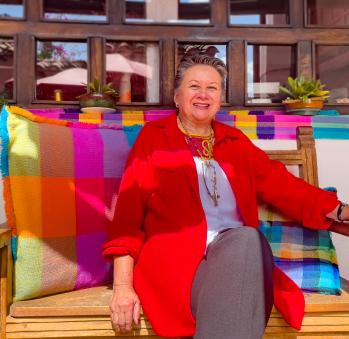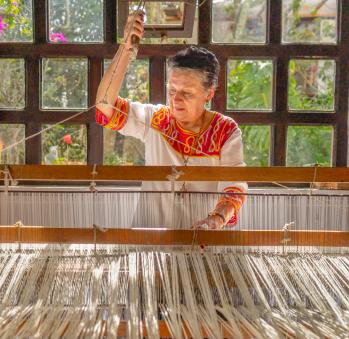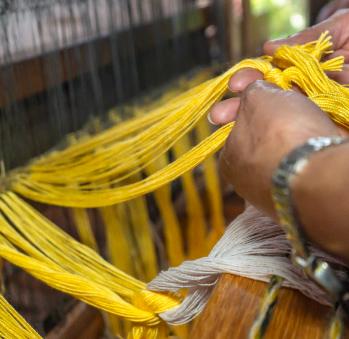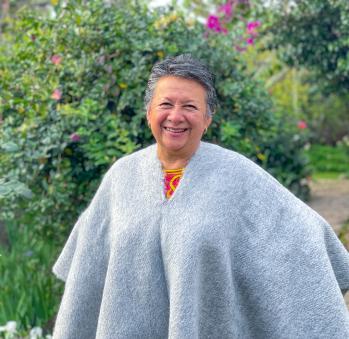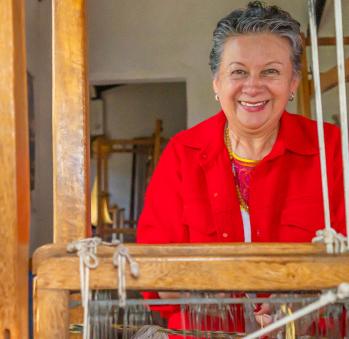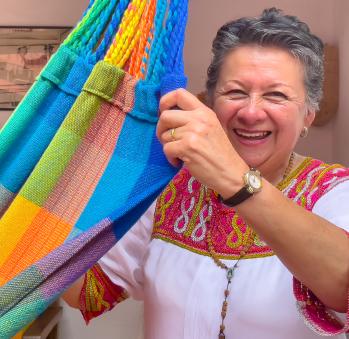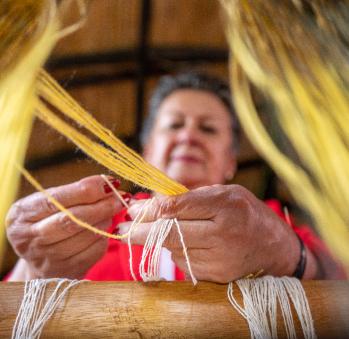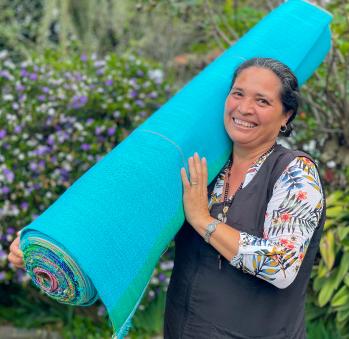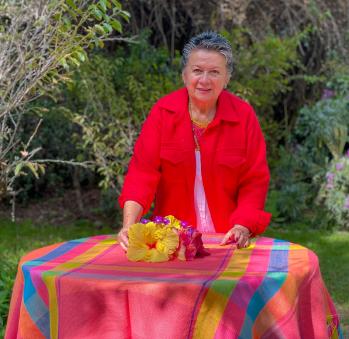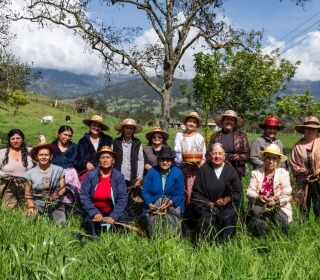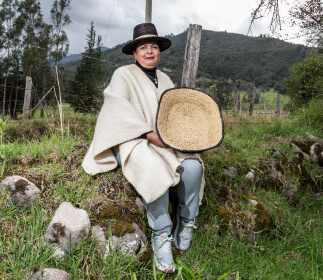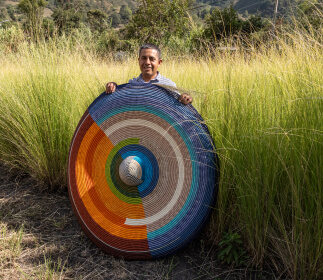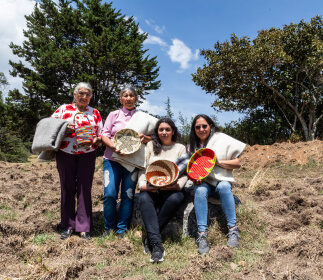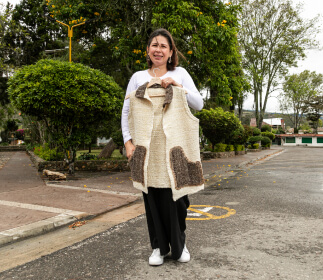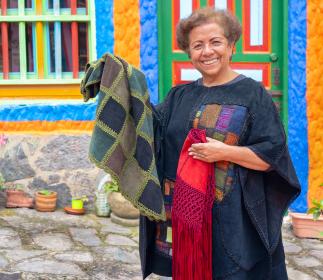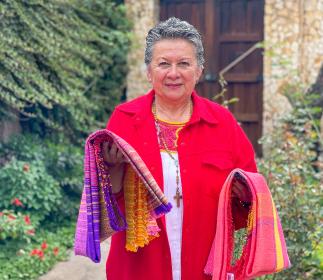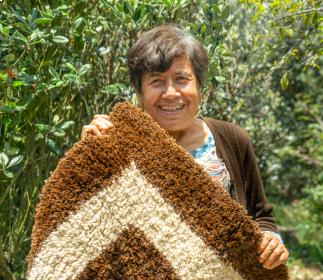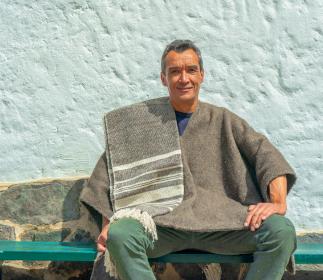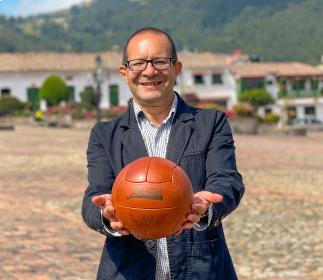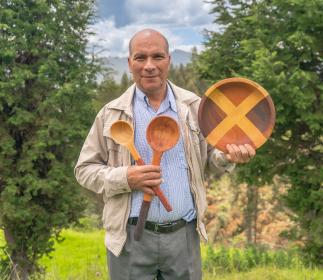María Elva Rincón Correa
Workshop: Tejidos en Telar María Elva Rincón
Craft: Tejeduría
Trail: Paipa-Iza and Paipa - Guacamayas Route
Location: Duitama, Boyacá
Maria Elva does not show the seventy-something years she claims she is. Even if she stopped dyeing her hair during the pandemic. She laughs when saying this because she knows she is strong and ready to continue for many more years in the weaving trade that runs through her veins. When she starts talking about this heritage of hers, she talks about the 1920 diploma awarded to her grandfather, Ignacio Rincón at the Sogamoso Exposición Agropecuaria, Industrial y Artística because of his cotton and wool weavings. She also shows the picture of his father, Alberto Rincón, with general Gustavo Rojas Pinilla at the inauguration of Corferias. She tells of how he got many orders of blankets to give to the ministers, ambassadors, and honorable figures who passed by the Boyacá stand. Moreover, she recalls that, in those years, he was hired as a teacher of a craftsmanship school that was founded at the La Picota jail: a workshop of more than 60 people where he taught how to make curtains and carpets. As a child, she remembers having visited the house of Doña Berta de Ospina, the wife of former president Mariano Ospina, picking up the curtains that her father made to decorate their country house, La Clarita.
She speaks proudly of her background: of how her grandfather and her father went more or less every two weeks to take the fulling mill to Bogotá. That is to say, they took the order of blankets that they made with the Don Ignacio’s six looms with which they supplied stores. She has the clear memory of half a century ago when she went with them to gather wool at La Plaza de la Lana in Sogamoso. “It was beautiful,” she says happily. Although she never really believed she would dedicate herself to the trade because her brothers took other paths, like medicine, architecture, dentistry, and speech therapy. Even she got trained in art and decoration. Nonetheless, circumstances took her back to her roots. She got divorced and the return home led her to a trade that let her rediscover herself through weaving.
This happened a long time ago, and much has happened in her life, as in many others’. She treasures every one of her customers, for the tablecloths that have made her famous are an open secret. Whoever discovers them tells somebody else or gives them as a gift, and so their infinite colors multiply along Colombia’s dining tables. However, in order to achieve her fame, she has had to go through all sorts of trials and tribulations. She has seen the choices of the national economy directly affect her trade. For instance, she can place the exact moment when wheat and barley stopped being grown in Boyacá because she worked at the Milling Union. “It was when, during Misael Pastrana’s administration, these supplies started getting imported. This then happened to wool, which started getting imported from Uruguay.” Likewise, she precisely remembers when, during the eighties, she became the provider of fabrics for bus upholstery, which meant she had to hire ten employees and two vans to distribute her products. This went on until the Apertura of César Gaviria’s administration, when the Italian carpeting imports destroyed her business. She was left with nothing.
Rosita, her right-hand woman and the heir to her legacy, allowed her to continue on, showing her her solution could be tablecloths. They were a soultion indeed. She motivated her to discover that multicolored pallet with which she lights up the tableware. They have both mastered the looms with which they devote themselves to the joys of creation. They forget about everything else while weaving, and it has become their space for calmness: their place for friendship and life.
Craft

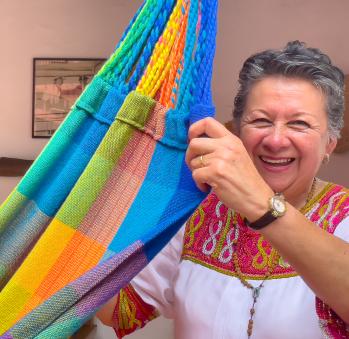
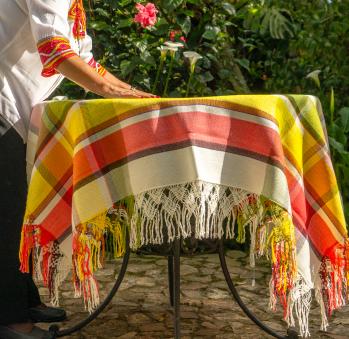
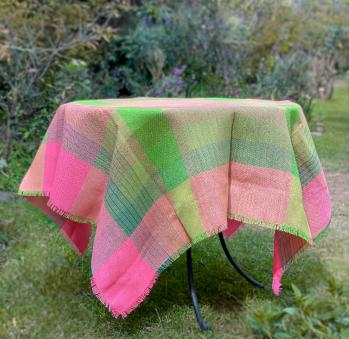
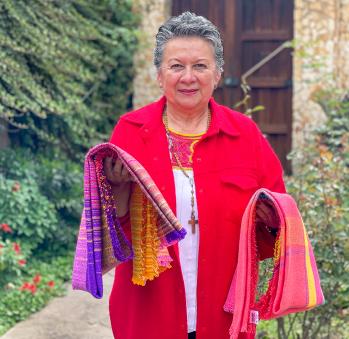







Artisans along the way
Artisans along the way
No puede copiar contenido de esta página








































